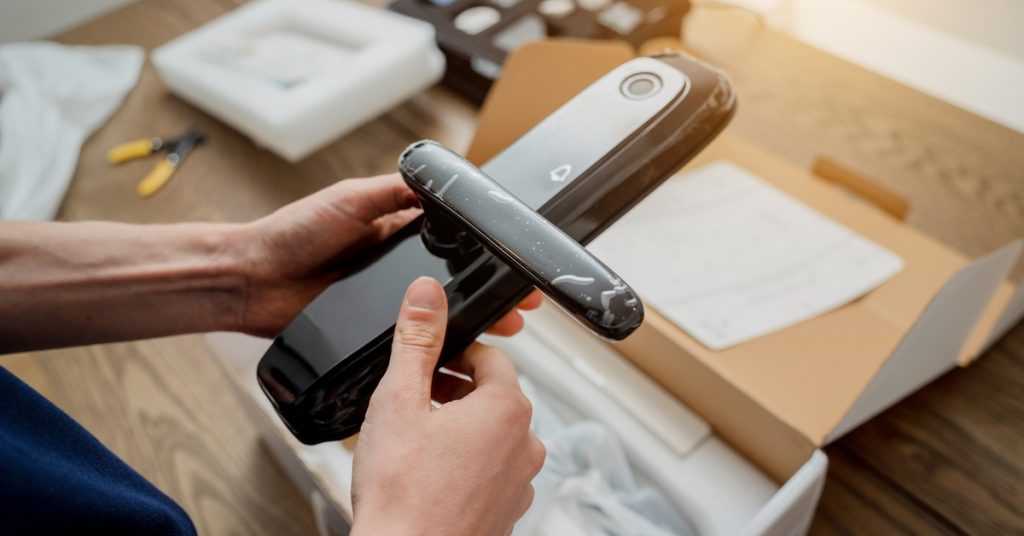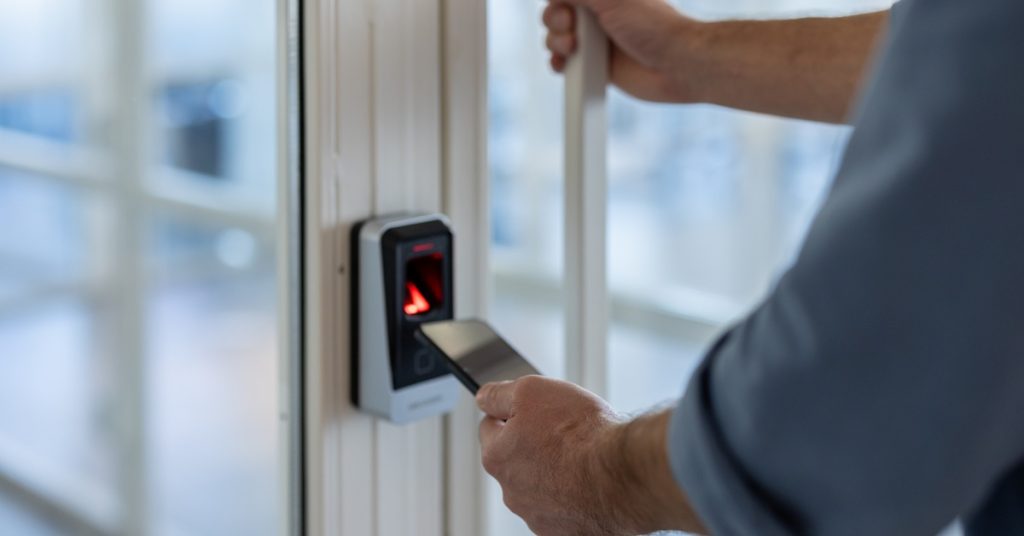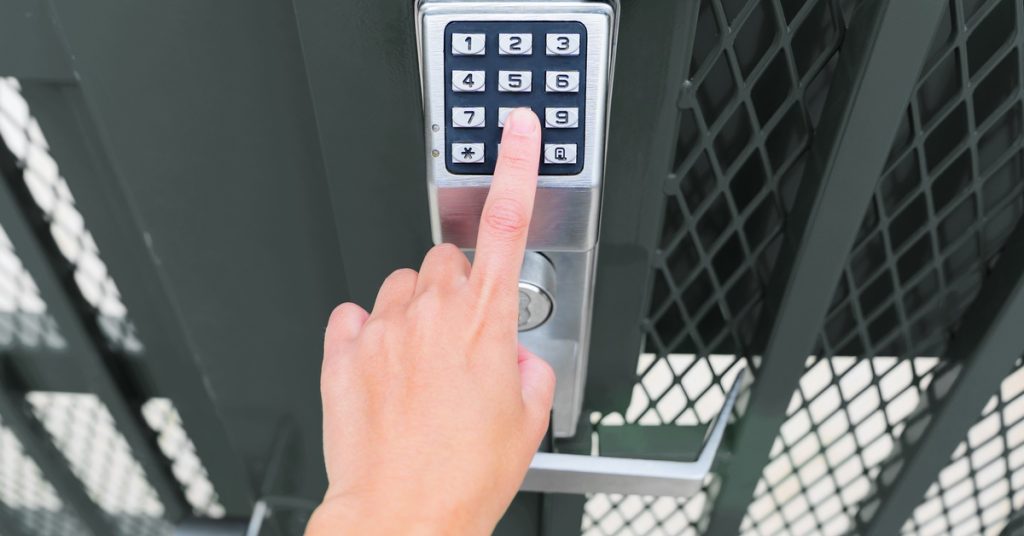A Buyer’s Guide to Keyless Security Systems

Moving away from traditional keys toward a keyless security system modernizes your operations and enhances control over who accesses your facilities. These systems utilize credentials such as PIN codes, access cards, or even smartphones, thereby improving overall efficiency. However, an one-size-fits-all system doesn’t exist, and you must select the best one for your operation. To guide your choice, read our buyer’s guide to keyless security systems now!
Understanding How Keyless Security Systems Work
Keyless security systems provide access to a building or specific areas without the use of conventional metal keys. These systems have three main components: a credential, a reader, and a controller. The credential serves as the “key,” which can take many forms, like a key fob, a smart card, a mobile app on your phone, or a simple PIN code.
A user presents their credential to the reader installed at an entry point. The reader then sends this information to a central controller, which verifies the validity of the credential. If the system authorizes the user for that specific door at that particular time, it unlocks the entry point.
The Power of Audit Trails and Remote Management
Keyless access control units offer more than convenience. They provide a detailed record of entry and exit activities. Simply put, every time someone uses their credential, the system logs the event, giving you a comprehensive data trail for auditing.
This data helps you monitor traffic patterns, investigate incidents, and ensure only authorized personnel enter secure zones. For example, you can easily check who accessed the server room over the weekend or which employees entered the main office after hours. You can also manage access remotely, a powerful feature for business owners who need to oversee multiple locations.
Exploring the Different Types of Keyless Systems
When you explore keyless security, you will find several options, each with unique features suited for different business environments.
Keypad Locks
Keypad locks are one of the most direct choices, requiring users to enter a PIN for access. They support areas with frequent visitor traffic or for businesses that want a simple solution without physical credentials. You can assign unique codes to each employee and change them easily whenever staffing changes occur.
Key Fobs and Smart Cards
Another popular choice involves key fobs and smart card systems, which use proximity technology. Employees simply tap their fob or card on a reader to unlock a door, making entry quick and efficient.
Mobile Credentials or Biometric Systems
For a more modern approach, mobile keyless entry systems allow staff to use their smartphones as credentials. Through technologies like Bluetooth or NFC, a phone can unlock doors via a dedicated app, adding a layer of convenience many employees appreciate.
High-security environments often utilize biometric systems, which authenticate users based on unique biological traits such as fingerprints or facial recognition, providing a superior level of security.

Key Features To Consider in a Keyless System
System features are an essential aspect of the buyer’s guide to keyless security systems. This is because certain features will make a substantial difference in their utility for your business. Scalability should rank high on your list of considerations as it allows you to add more users, doors, and locations without replacing the entire infrastructure.
Scalability future-proofs your investment and ensures your security can expand alongside your operations. For example, a system like Pac-Blu™ by PACLOCK® offers a cloud-based platform that grows with your company, accommodating new employees or office expansions.
Integration capability also matters for creating a cohesive security network. Your keyless entry system should connect with other security tools, such as video surveillance cameras, alarm systems, or building management software. When your systems communicate, you create a more powerful and responsive security environment.
Remote management is another feature that offers immense value, especially for busy business owners who manage multiple sites. A system with a cloud-based portal or a mobile app empowers you to control your building’s access from anywhere. For example, you can remotely lock or unlock doors, grant temporary access to a contractor, or revoke an employee’s credentials from your phone or laptop.
Assessing Your Business’s Specific Security Needs
The size and layout of your facility will influence the type and scale of the system you need. A small office with a single entrance has different needs than a large warehouse with multiple loading docks, office areas, and restricted zones. So, count the number of doors you need to secure and identify any high-risk areas, such as server rooms or storage areas for valuable inventory, that may require a higher level of security.
Understanding Access Patterns and Employee Roles
Your daily operational flow also helps determine the best fit. Consider the number of employees who need access and whether you have different access levels for various roles. For instance, some employees may require 24/7 access, while others only need access during standard business hours.
You should also account for non-employee traffic, such as clients, delivery personnel, and maintenance workers. A flexible system allows you to create custom schedules and permissions for different user groups.
Planning for Long-Term Security Goals
Finally, think about your long-term security goals. Are you looking for a basic replacement for traditional keys, or do you want a comprehensive solution that can integrate with other aspects of your business technology?
Your budget will naturally guide your decision, but it helps to view this purchase as an investment in your business’s safety and efficiency. Systems that offer detailed audit trails, remote management, and scalability may have a higher initial cost but can provide greater value and security over time.

Installation and Maintenance Considerations
The process of installing your new keyless security system can vary depending on its complexity and whether you choose a wired or wireless solution. Wireless systems, which often operate on batteries, are typically easier and faster to install because they do not require extensive wiring through your walls. However, you should still seek professional installation to ensure all components communicate correctly.
After installation, ongoing maintenance ensures your system continues to function properly. Maintenance includes regularly updating the system’s software and firmware to protect against new security threats and benefit from the latest features. You should also establish a protocol for managing user credentials, such as promptly revoking access for departing employees and periodically reviewing access logs for any suspicious activity.
Evaluating Customer Support and Service Plans
Before you commit to a system, inquire about the provider’s support services. Do they offer technical assistance if you encounter an issue? Are software updates included with your service plan? A reliable provider will offer ongoing support to help you manage and maintain your system effectively. They ensure your investment continues to protect your business and provides the convenience and control you expect over the long term.

Recent Comments